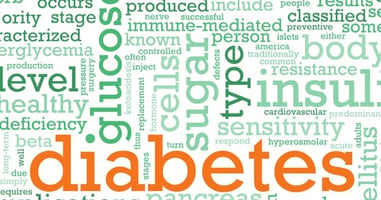Individuals with diabetes who also have depression have a greater risk of dementia than do diabetes...
Perinatal and Postpartum Distress Increases Risk for Developmental Delays
 |
Muhammad Kashif Mughal, M.B.B.S., Ph.D., of the University of Calgary and colleagues evaluated data from the three-year follow-up to the All Our Families (AOF) study, an ongoing study of mothers and children in Calgary, Alberta, Canada. The AOF study, begun in 2008 as the All Our Babies study, includes self-reported assessments of mothers’ distress at multiple time points ranging from before the 25th week of gestation up to three years postpartum. Also included are parent-reported tools to measure child development at age 3 across five domains: communication, gross motor, fine motor, problem solving, and personal-social. For the current study, the researchers analyzed data from 1,983 mother-child pairs.
Overall, 4.7% to 6.4% of the mothers reported depressive symptoms at four time-points: <25 weeks gestation, 34 to 36 weeks gestation, 4 months postpartum, and one year postpartum. Also, 13.8% to 18.5% of mothers reported anxiety symptoms at six time points: <25 weeks gestation, 34-36 weeks gestation, 4 months postpartum, one year postpartum, two years postpartum, and three years postpartum. After applying statistical models, the researchers found that persistent subclinical and high anxiety symptoms were associated with an increased risk of communication delay at age 3 years. They also found that persistent high anxiety symptoms and early postpartum depression were associated with an increased risk of personal-social delay at age 3 years.
The researchers chose to evaluate multiple time points for a more complete picture of risk over time. “[F]ocusing on maternal distress at one time point is problematic because recent studies characterizing perinatal mental health problems suggest that mental health symptoms are not isolated incidents and tend to recur or continue for a majority of women,” Mughal and colleagues wrote.
The results suggested an insignificant association between maternal distress and the remaining domains of child development (gross motor, fine motor, and problem solving). However, the researchers identified other risk factors for these domains, such as maternal age greater than 35 years, male sex, and preterm birth for gross motor delays; low maternal education and male sex for fine motor delays; and low family income and preterm birth for problem-solving delays. Having a family with two or more children was a protective factor for fine motor development.
“The study provides evidence for redefining ‘at-risk’ women as those traditionally identified as high risk as well as those identified as having subclinical symptoms over time,” Mughal and colleagues concluded. “As such, these findings call for a shift in the current model of health care … to approaches that capture the spectrum of chronicity and severity to ensure appropriate care that supports the improvement of maternal mental health outcomes and development in preschool children.”
(Image: iStock/shapecharge)






